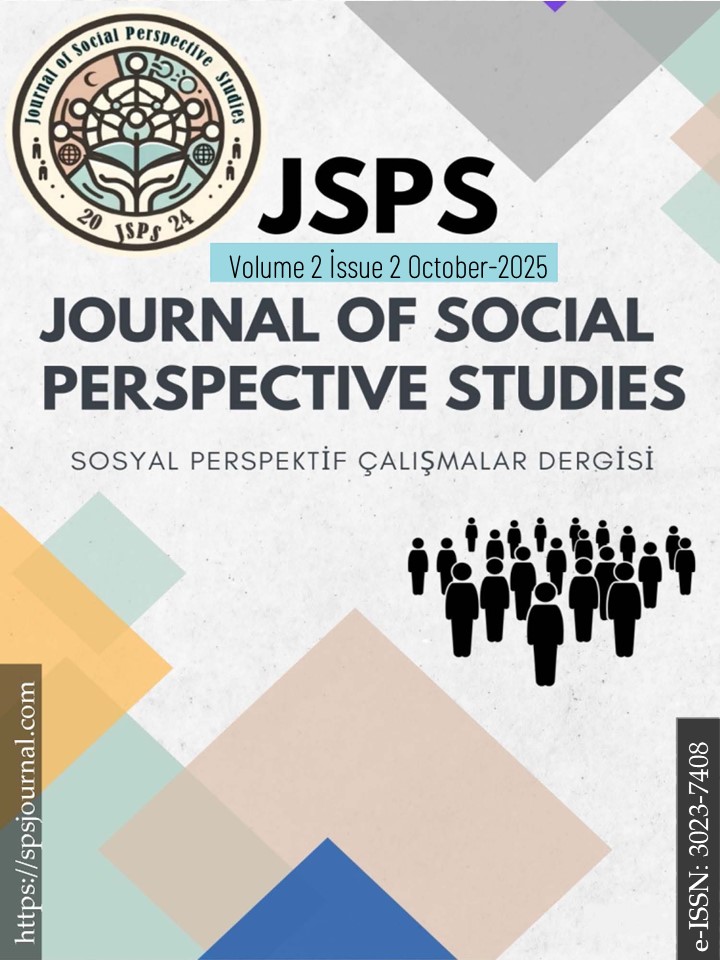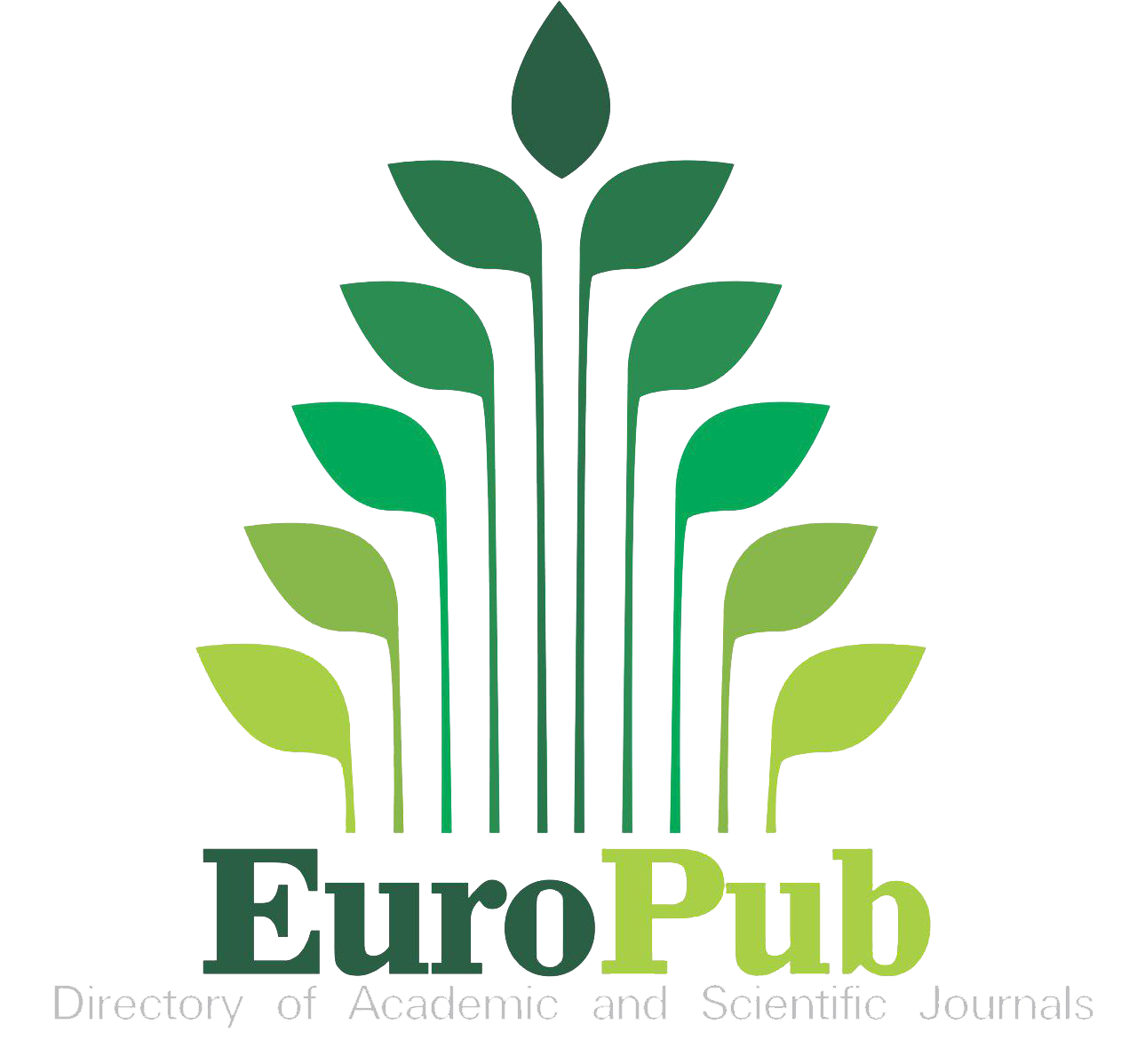An Investigation of Pre-Service Social Studies Teachers' Perceptions Regarding the Introduction of Türkiye's UNESCO World Heritage Sites to Secondary School Students Through VR Technology
DOI:
https://doi.org/10.5281/zenodo.15498772Keywords:
UNESCO World Heritage List, VR technology, Cultural heritage, Natural heritage, Social studiesAbstract
This study aims to examine the perceptions of social studies teacher candidates regarding the process of introducing Türkiye’s UNESCO World Heritage Sites to secondary school students through Virtual Reality (VR) technology. Conducted using the phenomenological design, the study involved four teacher candidates enrolled at a public university and twenty secondary school students attending a public school during the 2024–2025 academic year. Data were collected through the “Student Observation Form,” based on the teacher candidates’ observations of students during the implementation process, and the “Virtual Reality Technology Experience – Teacher Candidate Opinion Form,” which focused on their post-implementation experiences. One of the findings of the study revealed that the secondary school students observed during the implementation process exhibited self-control and participated in the activity with high levels of motivation and enthusiasm. Other findings of the study revealed that the teacher candidates who carried out the implementation developed an awareness of the importance of contributing to the ownership and preservation of local heritage sites, recognized the necessity of actively engaging the local community in these efforts, and gained insights into UNESCO’s work and contributions in the protection of heritage sites.
References
Akman, Ö. (2023). Secondary school students’ views on the use of virtual reality technology in historical subjects in social studies course. In proceedings of ınternational conference on studies in engineering, Science, and technology (pp. 197-201).
Akpınar, E. (2007). Türkiye’nin dünya mirası listesi'ndeki yeri ve yeni bir aday önerisi. Erzincan Eğitim Fakültesi Dergisi, 9(1): 81-106.
Baxter, P., & Jack, S. (2008). Qualitative case study methodology: Study design and implementation for novice researchers. The Qualitative Report, 13(4), 544-559. https://doi.org/10.46743/2160-3715/2008.1573
Cebeci, Y., Karaman, Z., Yücel, E. B. (2024). Ortaokul öğrencilerinin Türkiye’nin UNESCO Dünya Mirası Listesi’ndeki miras alanlarını VR teknolojisi aracılılığıyla deneyimlemelerine ilişkin algıları. Uluslararası Eğitim ve Bilim Araştırmaları Dergisi, 1(1), 20-39.
Creswell, J. W. (2018). Nitel araştırma yöntemleri. Ankara: Siyasal Kitapevi.
Ekinci, Y. (2012). Dünya mirası nedir? nasıl girilir? nasıl kalınır? 20.03.2025 tarihinde http://www.worldheritageturkey.com/tr/detail/20/dosyalar/258/yasagul-ekincibr-dunya-mirasi-nedir-nasil-girilir-nasil-kalinir.html adresinden erişilmiştir.
Eraslan, Ş. (2020). Unesco dünya miras listesinde arkeolojinin temsiliyeti: Türkiye örneği. Journal of Awareness (JoA), 5(2), 119-134. https://doi.org/10.26809/joa.5.010
Gedik, R. (2020). Sanal gerçeklik teknolojisinin ortaokul sosyal bilgiler dersi iklimler konusunda kullanılması üzerine öğrenci görüşleri. Journal of Innovative Research in Social Studies, 3(1), 33-53.
İneç, Z. F. (2020). Sanal gerçeklik teknolojisi ile sosyal bilgiler öğretiminde kültür aktarımı. Atatürk Üniversitesi Kazım Karabekir Eğitim Fakültesi Dergisi, (41), 180-203. https://doi.org/10.33418/ataunikkefd.793821
Jung, T., Tom Dieck, M. C., Moorhouse, N., ve Tom Dieck, D. (2017). Tourists’ experience of virtual reality applications. 2017 IEEE International Conference on Consumer Electronics (ICCE), 208-210. https://doi.org/10.1109/ICCE.2017.7889287
Kenna, J. L. ve Potter, S. (2018). Experiencing the world from inside the classroom: Using virtual field trips to enhance social studies instruction. The Social Studies, 109(5), 265-275. https://doi.org/10.1080/00377996.2018.1515719
Koca, N. ve Daşdemir, İ. (2018). Sosyal bilgiler öğretiminde sanal tur uygulamaları. Electronic Turkish Studies, 13(27).1007-1016. https://doi.org/10.7827/TurkishStudies.14420
Kudver, D. (2022). The effect of virtual reality experience of museum visit on tourısm customers after VR. (Yayımlanmamış Yüksek Lisans Tezi). Yaşar Üniversitesi.
Lacko, L. (2019). Cultural heritage objects in education by virtual and augmented reality. In M. C. Tom Dieck & T. Jung (Eds.), Augmented reality and virtual reality (pp. 175–187). Springer. https://doi.org/10.1007/978-3-030-06246-0_13
MEB. (2023). Sosyal bilgiler dersi öğretim programı (İlkokul ve Ortaokul 4, 5, 6 ve 7. Sınıflar). Ankara: MEB Yayınları.
Merriam, S. (2009). Qualitative research: A guide to design and implementation. San Fransisco: John Willey & Sons Inc.
Metin, E. ve Kılıç, F. (2023). Sosyal bilgiler öğretiminde sanal gerçeklik uygulamalarının kullanımı: Seben kaya evleri ve fosil ormanı örnekleri. Abant İzzet Baysal Üniversitesi Eğitim Fakültesi Dergisi, 23(4), 2013-2034. https://doi.org/10.17240/aibuefd.2023..-1323974
Mikropoulos, A.T. ve Natsis, A. (2011). Educational virtual environments: A ten-year review of empirical research (1999–2009). Computers & Education, 56, 769-780. https://doi.org/10.1016/j.compedu.2010.10.020
Pantano, E., ve Corvello, V. (2014). Tourists’ acceptance of advanced technology-based innovations for promoting arts and culture. International Journal of Technology Management, 64(1), 3-16. https://doi.org/10.1504/IJTM.2014.059232
Papanastasiou, G., Drigas, A., Skianis, C., Lytras, M. ve Papanastasiou, E. (2019). Virtual and augmented reality effects on k-12, higher and tertiary education students: twenty-first century skills. Virtual Reality, 23, 425–436. https://doi.org/10.1007/s10055-018-0363-2
Safitri, D., Marini, A., Fitrisia, A., Widodo, S., ve Meyers, K. F. (2023). Model of virtual reality in social studies to ımprove student learning outcomes. Eurasian Journal of Educational Research, 105(105), 103-118.
Sherman, G., ve Hicks, D. (2000). Using a historic site to develop virtual reality-enhanced web-based instructional material: Learning to use technology as a partner in the classroom. Contemporary Issues in Technology and Teacher Education, 1(2), 244-257.
Tom Dieck, M. C., Jung, T., ve Michopoulou, E. (2019). Experiencing virtual reality in heritage attractions: Perceptions of elderly users. Augmented reality and virtual reality: The power of AR and VR for business, 89-98. https://doi.org/10.1007/978-3-030-06246-0_7
Topçu, T. (2024). Yabancı dil öğretiminde sanal gerçeklik teknolojisinin etkileri. (Yayımlanmamış Yüksek Lisans Tezi). Ankara Üniversitesi.
UNESCO Türkiye Millî Komisyonu (2024). UNESCO Dünya Mirası Listesi. 17.04.2025 tarihinde https://www.unesco.org.tr/Pages/125/122/UNESCO-Dünya-Mirası-Listesi adresinden erişilmiştir.
Yavuz, E. ve Uslu, Ö. (2021). Sosyal bilgiler öğretmen adaylarının sanal gerçeklik teknolojisinin eğitimde kullanımı hakkındaki görüşlerinin değerlendirilmesi. Sinerji Uluslararası Alan Eğitimi Araştırmaları Dergisi, 2(2), 132-152. https://doi.org/10.54971/synergy.1011738
Yıldırım, A. ve Şimşek, H. (2016). Sosyal bilimlerde nitel araştırma yöntemleri. Ankara: Seçkin Yayıncılık.
Youngblut, C. (1998). Educational Uses of Virtual Reality Technology, Institute for Defense Analyses.
Zantua, L. S. O. (2017). Utulizationof virtual reality content in grade 6 social studies using affordable virtual reality technology. Asia Pacific Journal of Multidisciplinary Research, 5(2), 1-10.
Downloads
Published
How to Cite
Issue
Section
License
Copyright (c) 2025 Mehmet Uymaz, Yiğit Cebeci, Dilan Bulut Gevher, Hüseyin Çalışkan

This work is licensed under a Creative Commons Attribution 4.0 International License.






